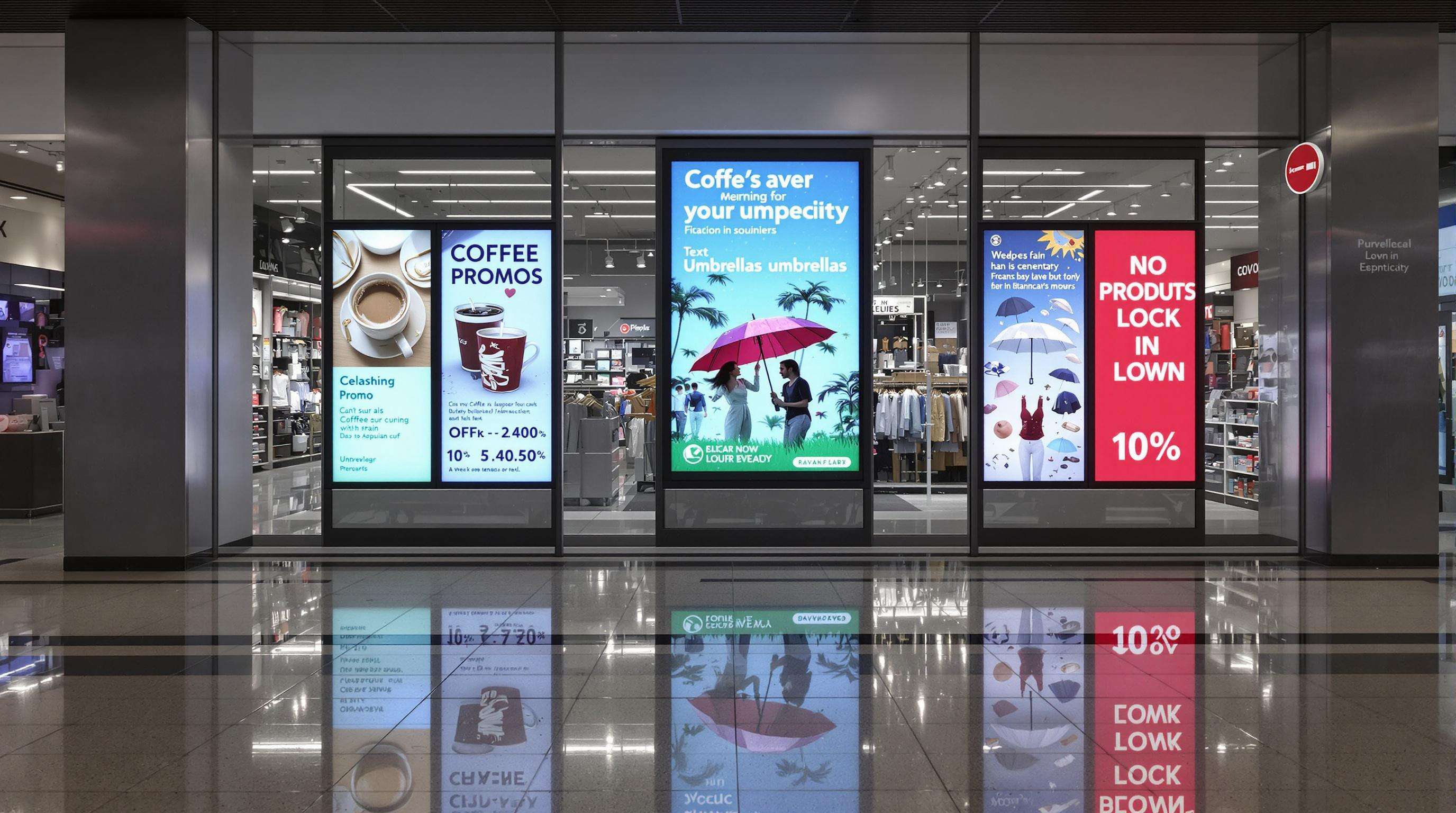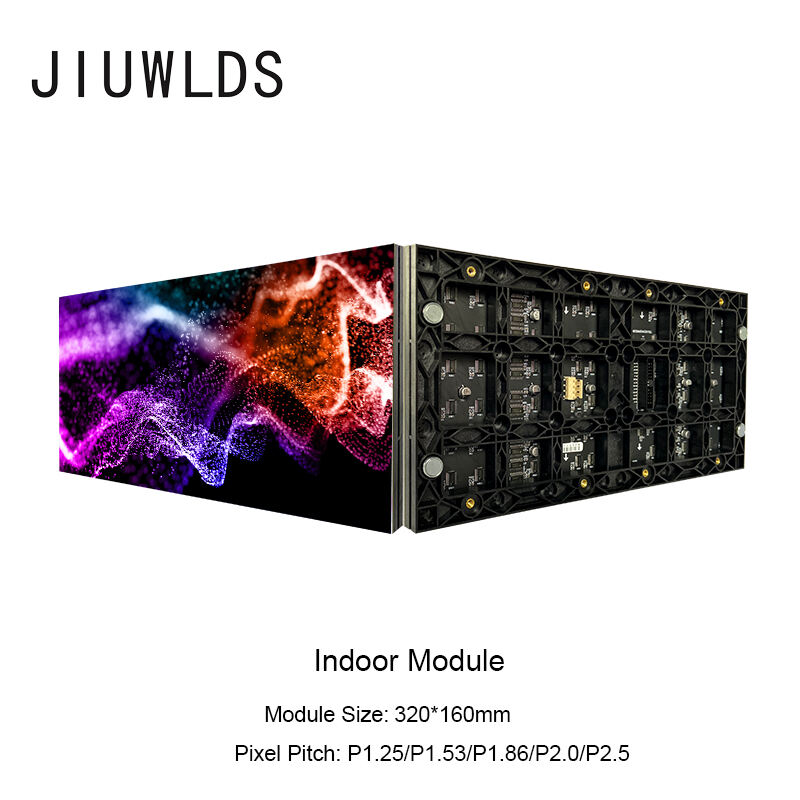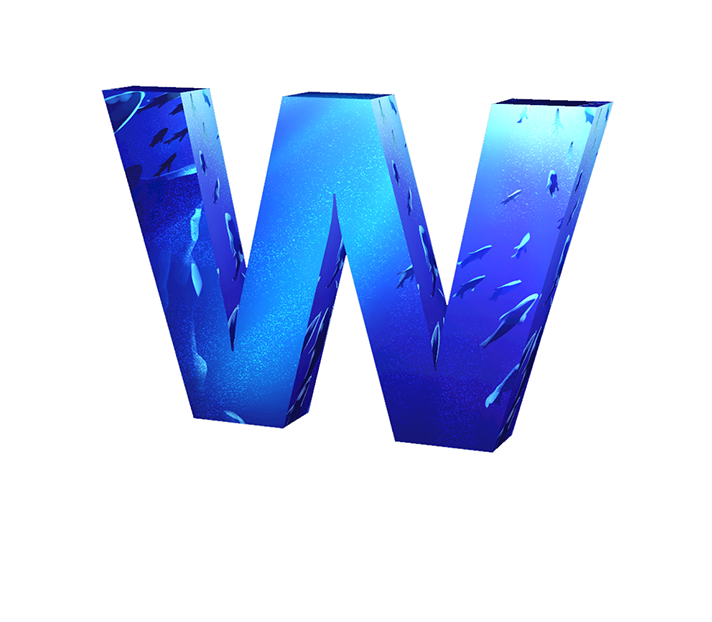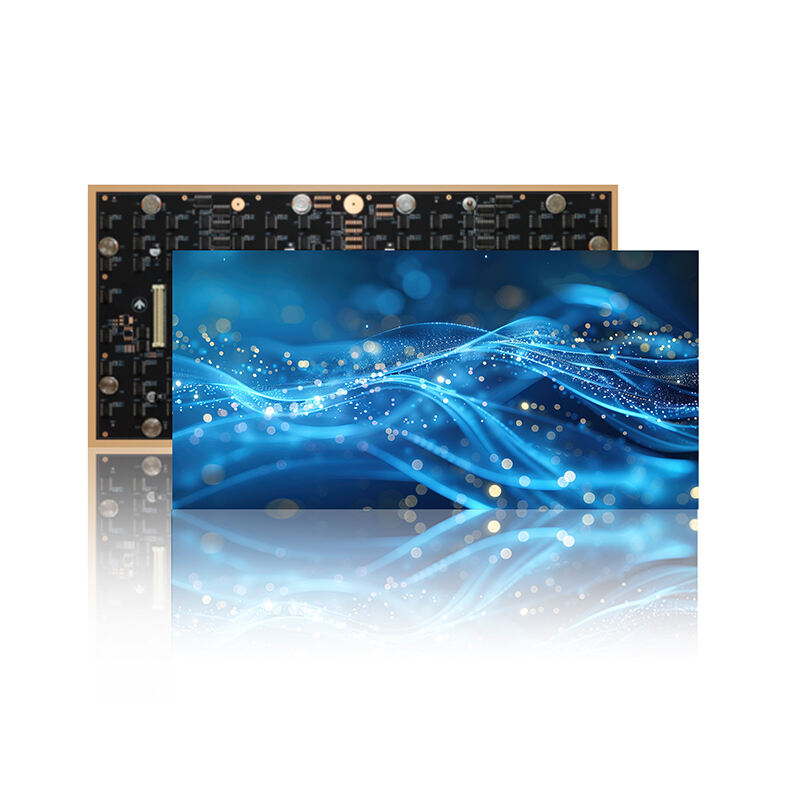The Benefits of Using Poster LED Sign Boards for Promotions
Why LED Sign Boards Are Revolutionizing Retail Promotions
More and more stores are switching to LED sign boards these days, especially since the digital signage market is expected to hit around $3.8 billion by 2025 according to Statista. These moving signs can be changed instantly to show what's on sale, upcoming events, or when stock levels change something static posters just cant do. Studies from neuroscience labs indicate people actually look at animated stuff about twice as much as regular signs, which means customers spend more time checking out products in the store. Some recent research in retail technology points to shops that put up LED screens where lots of people walk past seeing about 15% more visitors coming through their doors after installing them for three months or so. The money saved on electricity bills too makes sense here LEDs cost about 40% less to run than old fashioned neon signs plus there's no need to keep printing new posters all the time. Most businesses get their investment back somewhere between 12 and 18 months, and they maintain consistent branding whether someone sees it online or walks into the actual store location.
Boosting Customer Engagement with Dynamic and Interactive LED Content
Strategies for Effective Customer Engagement Using LED Sign Boards
LED sign boards today let stores move beyond just showing ads to creating actual experiences people want to participate in. Take clothing stores with motion activated screens that pop up when someone walks by. Shoppers can see different colors or sizes of clothes without touching anything, which cuts down on contact but still keeps them interested. Stores have started using games too. Some run promotions where customers scan a QR code and then spin a virtual wheel for discounts. These kinds of fun activities bring in about 25 to 40 percent more people according to a report from Digital Retail Insights last year. Fast food places are getting smart menus too. The screens show different items depending on what the weather is like outside or what time it is. This helps customers decide faster at the register, saving around 18 minutes per person during busy times.
Interactive Advertising in High-Traffic Areas with LED Screens
Airports and transportation centers are now putting up those big LED screens so people don't just stare at their watches while waiting around. A major shopping center actually saw dwell times jump by about 33 percent once they put in these augmented reality directories. Shoppers can point their phones at displays and virtually try on different accessories through the camera feature. The screens themselves change what gets shown depending on who's looking at them. On Saturday mornings when families come in drooling over kids' toys, the ads switch to something totally different than what appears Monday through Friday when business folks need office supplies or travel gear. No one has to manually adjust anything either since it all happens automatically behind the scenes.
Real-Time Content Updates and Their Impact on Consumer Behavior
When businesses automate their content, they can grab those fleeting chances when something is timely. Take this local convenience store chain for instance. They boosted sales by about 12 percent once they started linking their LED displays to real inventory numbers so customers would notice what was running low. Stores that adjust their ads based on weather patterns see better results too. Cold days mean people want warm beverages, and these kinds of targeted messages get clicked on nearly 27% more often compared to regular ads that don't change. Restaurants are getting clever with social media too. Many now show recent customer comments or photos from diners right on their walls, which somehow makes the place feel more trustworthy even though it's just screens mixed into brick and mortar spaces.
Integrating Real-Time Data for Smarter, AI-Driven Promotional Campaigns
Dynamic Promotions Based on Time, Inventory, and Events

LED sign boards today let stores run smart promotions powered by artificial intelligence. Retailers can set up time sensitive offers that kick in when customers need them most. Think coffee deals right around breakfast time at 7am or those happy hour signs popping up around 5pm when people start winding down from work. When inventory gets low or builds up too much, the system will flag those products automatically so staff knows what needs attention. Weather based marketing is another neat trick these signs pull off. Stores promote umbrellas when it rains or push sunscreen sales on sunny days thanks to weather data feeds built into the technology. According to research from last year, businesses that implemented these kinds of dynamic marketing approaches reported roughly a 22 percent boost in sales over traditional fixed message boards.
How Real-Time Data Integration Enhances LED Signage Effectiveness

Smart systems look at how people move around stores, who they are based on age and location, and what they buy to decide what gets shown on those big digital screens. Take a local market for example they might run ads for chips and drinks when busy workers pass by after work, but switch to family friendly promotions featuring ready made meals on Saturday mornings. The stores watch everything through special dashboards that show numbers about how long customers stop to look and whether they actually make purchases. With this info right there, marketing teams can quickly try different images or messages without waiting weeks for results. And it works pretty well too most businesses that have adopted this approach saw their return on investment jump by about 30 percent compared to old fashioned methods last year according to industry reports.
Bridging Online and In-Store: Omnichannel Marketing with LED Displays
LED signs bridge the gap between digital and physical shopping experiences these days. They show QR codes that let people download apps, display live social media posts, and even update inventory info from online stores in real time. According to some research published last year, companies that match their online deals with LED displays see about 35 percent better customer retention rates. Take a fashion store for instance. Many now project photos from customers' Instagram accounts onto big screens inside their shops. This not only makes shoppers feel connected to others but also gets them coming back in person. The numbers back it up too – around 58 out of 100 consumers will actually walk into a store after seeing these combined digital and physical marketing efforts. Pretty impressive when you think about how many folks just pass by traditional ads nowadays.
Measuring ROI and Long-Term Business Value of LED Sign Boards
Calculating the Return on Investment for LED Signage in Retail
Retailers measure LED sign board ROI by tracking sales growth, customer engagement, and operational savings. Nielsen research indicates businesses using digital displays see a 29.5% increase in average purchase amounts. Key metrics include:
- Sales lift: Compare revenue before and after LED campaign implementation
- Engagement rates: Monitor QR code scans or foot traffic near displays
- Cost reductions: LED technology consumes 30–50% less energy than traditional lighting, cutting utility bills
Cost-Effectiveness of LED Sign Boards in Restaurants and Retail Stores
While initial costs range from $200 to $2,000 per screen, LED displays last 4–6 years with minimal maintenance. Restaurants report 18–22% faster table turnover rates when using menu boards with real-time updates. Retailers save $740 annually per display by eliminating printed promotional materials (Ponemon 2023).
Balancing Upfront Costs with Long-Term Gains in LED Adoption
The average ROI period for LED signage is 8–14 months. Brands recoup costs through:
- Extended hardware lifespan (50,000+ operating hours)
- Reduced labor costs from centralized content updates
- Increased brand recall: 47.7% of customers remember promotions shown on LED displays vs. 23% for static signs
Businesses prioritizing multi-year budgeting see 3.2x higher customer retention rates compared to short-term advertising approaches.
Strengthening Brand Awareness and Identity with Consistent LED Signage
How Digital Signage Enhances Brand Visibility and Recognition
LED sign boards elevate brand visibility by 63% compared to traditional signage, according to recent retail branding studies. These displays reinforce brand recognition through:
- Consistent color schemes matching corporate identity guidelines
- Dynamic logo animations that attract 40% longer viewer engagement
- Location-based messaging tailored to store environments
Businesses using LED signage with unified brand elements report an 80% improvement in customer recall accuracy (Retail Insights 2023).
| Brand Metric | Traditional Signs | LED Sign Boards |
|---|---|---|
| Visibility Range | 50–100 ft | 300–500 ft |
| Content Update Speed | 2–3 days | Real-time |
| Customer Engagement | 12% | 34% |
Using LED Sign Boards to Reinforce Brand Identity in Physical Spaces
Putting LED screens where people actually walk past them like near store doors or at checkout lines can boost brand recognition almost five times over. Smart retailers know this works best when they match their digital signs with what's on display and packaged for sale. The content needs regular updates too, maybe every 12 to 15 minutes so it doesn't get stale. Adding QR codes helps connect customers between the real world and online stuff. According to the QSR Trend Report from last year, stores that combine these LED displays with special deals see about a 28 percent jump in customer visits. Makes sense really, since people tend to notice things that catch their eye while shopping around.
FAQ
What are the main benefits of using LED sign boards in retail?
LED sign boards offer dynamic content updates, enhanced customer engagement, and significant energy savings. They can show real-time promotions, reducing the need for printed materials, and thus save costs.
How does LED signage impact customer behavior?
LED signage engages customers more effectively by providing interactive and timely content. This increases dwell time and can lead to sales increases due to targeted and dynamic marketing.
Is the investment in LED signs worthwhile for small businesses?
Yes, despite initial costs, LED signs are cost-effective long-term. They reduce energy and printing costs and generally provide a quick ROI through enhanced sales and brand engagement.
What role does real-time data integration play in LED signage?
Real-time data integration allows businesses to adjust signage based on current inventory, weather, and customer feedback, making promotions more relevant and effective.
How do LED signs fit into an omnichannel marketing strategy?
LED signs bridge digital and physical shopping experiences by displaying promotions, integrating social media, and linking to online stores, enhancing customer retention and engagement.







 Hot News
Hot News